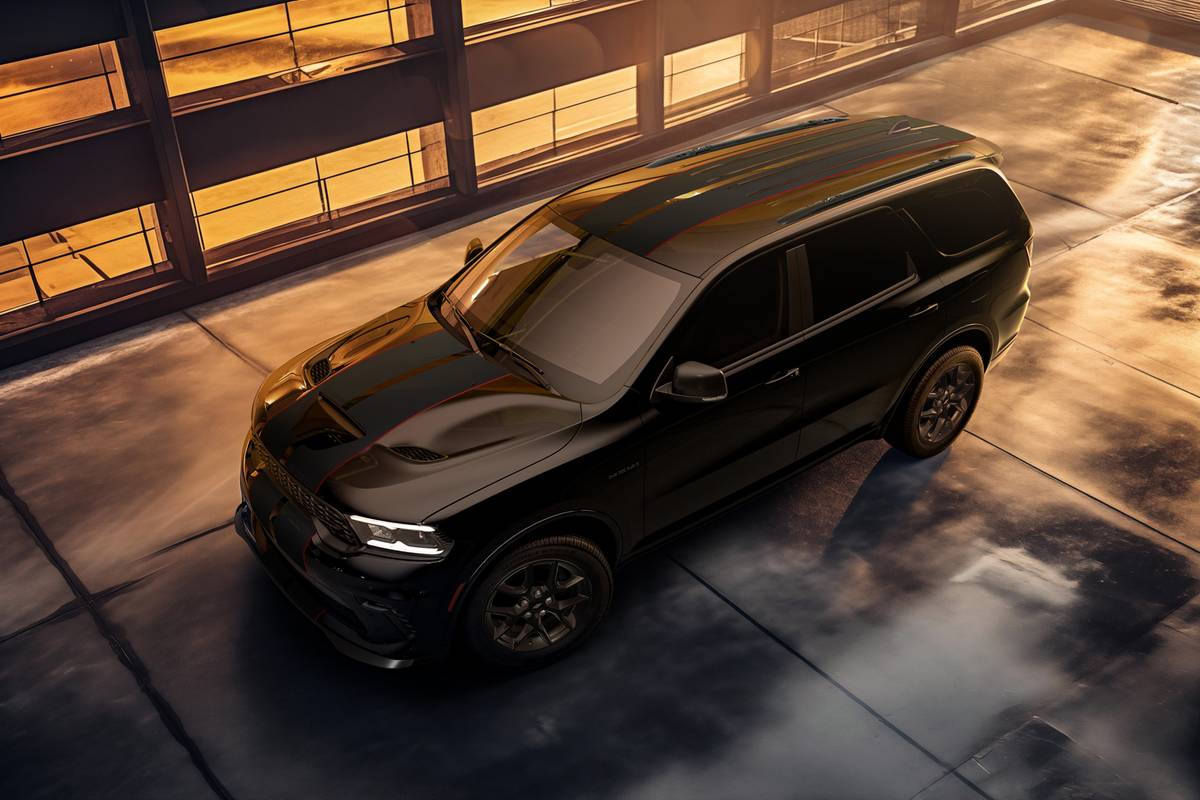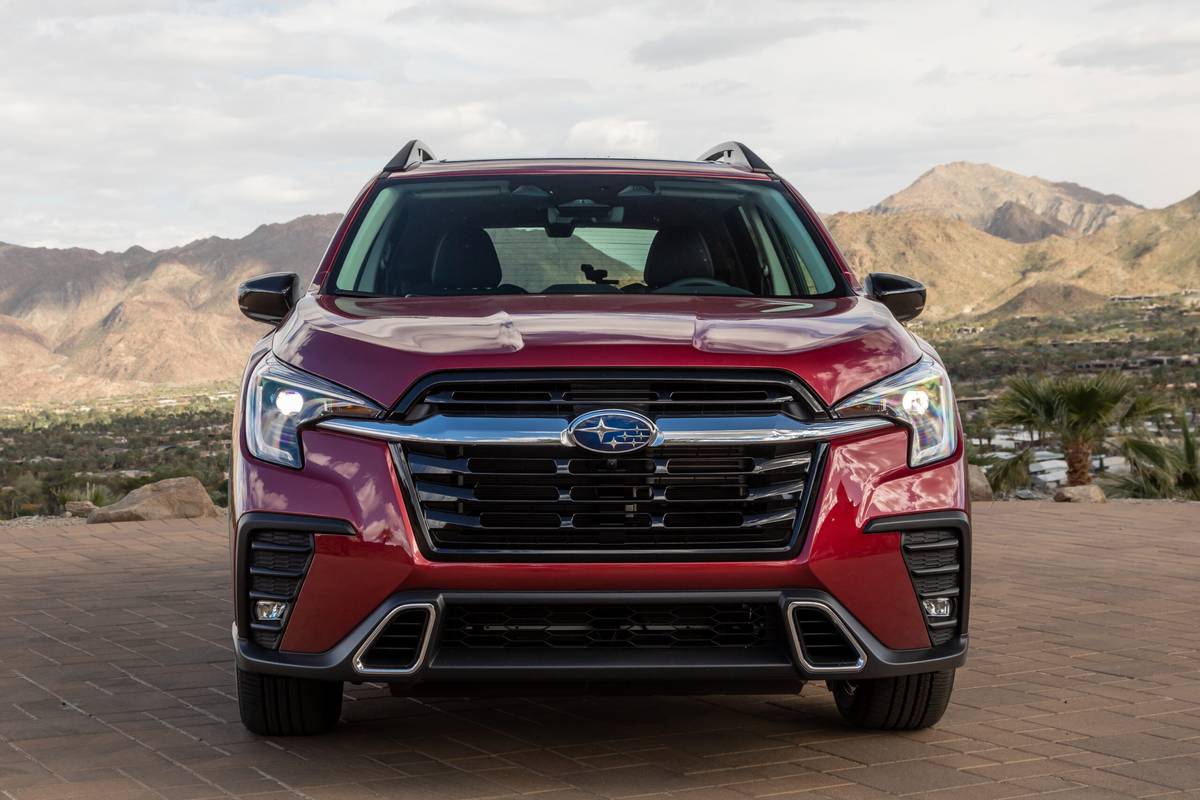chicagotribune.com's view
The size and weight of a full-size pickup truck, yet the maneuverability of a midsize sedan.
With the addition of four-wheel-steering, one of the major problems for consumers considering a full-size pickup has been solved.
4WS automatically adjusts rear-wheel angles, turning them opposite to the front wheels at lower speeds and in the same direction at higher speeds to optimize control over the vehicle.
Four-wheel-steering converts the huge truck into a limber, user-friendly machine that at lows speeds slips into and out of parking stalls–on the first try, without having to stop, back up, take another aim and squeeze in–and at higher speeds takes turns or slips into and out of the passing lane without lean and sway or fighting the wheel to get pointed straight again.
The 2002 GMC Sierra Denali, the high-performance pickup formerly known as the GMC C3, is the only vehicle in the market with four-wheel-steering, or Quadrasteer.
The ’02 GMC Sierra and Chevrolet Silverado extended-cab pickups will add the system in the next few months. GM’s full-size sport-utility vehicles, the GMC Yukon and Yukon XLT and the Chevy Tahoe and Suburban, will be the beneficiaries in ’03.
Though the 4WS Sierra extended cab won’t go on sale until sometime in the first quarter of this year, we got our hands on a pilot model to check it out.
Quickly found that with 4WS you are in control of where and when the pickup goes rather than the big truck doing what it wants, when it wants.
“We are poised to forever change public perception that big trucks are hard to handle,” said Sam Mancuso, Sierra brand manager. “Those who tow, and there are a lot of them, will be the biggest beneficiaries of 4WS.”
Tend to agree, especially after having piloted a Denali through a pylon obstacle course in Michigan this summer with a trailer tied to the rear bumper. Without 4WS it’s like towing Soldier Field. With 4WS the Denali and trailer moved in harmony with one another.
One problem 4WS creates: educating motorists of its advantages. “We’re working with dealers to set up obstacle courses at their stores for consumers to find out how the system works,” Mancuso said.
Ford doesn’t have 4WS. Nor does Dodge or Toyota. GM expects it will have 4WS exclusively for at least two more years.
Years ago four-wheel-steering was introduced on the Honda Prelude sports coupe. The thinking at the time was that 4WS was best suited for the nimble handling demanded of a small sporty car. The 4WS Prelude was short-lived, however, because few could notice the difference in handling between a small sports coupe and a small sports coupe with 4WS.
Now, at a time when big trucks and big SUVs are highly popular, folks realize that 4WS is better suited to big vehicles that need to be more nimble than to small vehicles that already are fairly manageable and effortless in a turn, a corner and parking in the lines in the lot.
We quickly realized another benefit of 4WS on a big truck other than the ability to park as easily as petite cars.
We drove the 4WS Sierra to the cul-de-sac at the end of the street and made the turn back home without stopping half way through the circle to avoid going off-road as usually happens in a full-size pickup. GMC boasts that with 4WS the Sierra extended cab has a curb-to-curb turning radius of 37.4 feet, only fractionally more than the 37.1 feet for a compact Saturn S-Series coupe.
Quadrasteer is standard on the Sierra Denali, but will be an option on the Sierra and Silverado extended cabs. Estimated cost is $5,000.
You might consider the expense justified when you weigh the time wasted in making four attempts to pull your full-size pickup into the parking space or the time and money wasted in making four attempts to pull into the parking space and accidentally kissing the vehicle on either side or the one behind.
However, the fir ime we pulled into the mall lot, gently turned the steering wheel and slipped into the space between two other vehicles as quickly as we would in a slender sedan, it was exhilarating.
But it’s one thing to pull the truck in quickly, another to exit your vehicle now that the pickup bulk is sandwiched between two slim cars. So still pick your spots.
And 4WS doesn’t solve another problem with full-size pickups–getting in and out gracefully. You’ll need running boards or a step, anything other than a stool, to reduce the distance between the cabin floor and ground.
And the 4WS Sierra extended cab hasn’t solved the other gripe with a GM full-size pickup–though its rivals have. Ford and Dodge have addressed the problem of short people in a big truck with the addition of power-operated pedals. Push a button and the brake and accelerator move to you rather than those of short stature having to move the seat forward to reach the pedals and in doing so come close to the air bag in the steering column.
Gary White, vehicle line executive for GM trucks (Cars, Jan. 3) promises that feature is coming; he just asks you be patient a while longer.
Quadrasteer comes with dash-mounted control settings for two-wheel-steering, four-wheel-steering and four-wheel-towing, the latter for when hauling boat or camper, in which case you also push the button marked “firm” for the optimum steering/suspension settings to handle the size and weight of that added load.
Only problem with the system in the pilot truck is that when the “2WS” or “4WS” or “tow” buttons were pushed, the light that flashes on to inform you of the setting was difficult to see.
GMC said company internals noticed the same problem, and the production model will have brighter, easier to see lights.
The final gripe with full-size trucks is fuel economy. The Sierra extended cab, for example, is rated at 15 m.p.g. city/18 m.p.g. highway with its 5.3-liter, 285-horsepower V-8.
GM will start working on that in ’04 with the addition of gas/electric hybrid powerplants in the trucks that promise 35 m.p.g. and make more inroads after that when it brings out displacement on demand (DOD) V-8s for full-size pickups and SUVs. With DOD, when cruising down the highway 4 of the 8 cylinders can shut off when they’re not needed to conserve fuel.
Nice touches in the test truck included flip-open rear door windows, flip up/back rear seat cushion to add cargo capacity in the cabin, front/rear seat cupholders, two dash-mounted power plugs for accessories, center console armrest/storage compartment with a tissue holder, though can’t help but wonder how a tissue holder fits the image of a rugged pickup.
Standard equipment includes dual air bags with a passenger-side cutoff switch, four-wheel anti-lock brakes, air conditioning, power door locks/windows/mirrors, cruise control and AM/FM stereo with CD player and digital clock .
Gradually , 4WS will make its way throughout the full-size truck and sport-ute lineup at GM, White noted, as part of a strategy in which full-size trucks, including the Sierra extended cab, and SUVs are going to undergo a design refreshening as well as feature and technology upgrade starting in the ’03 model year, a very short time after the trucks were last redone in 1999 and SUVs in 2000.
Latest news



